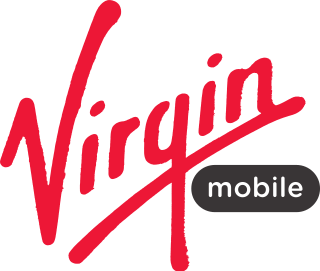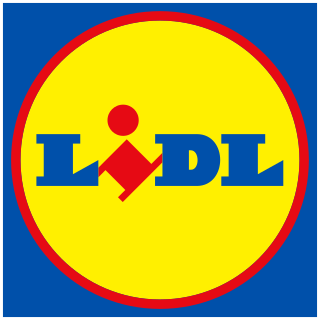Related Research Articles

Celeron is a discontinued series of low-end IA-32 and x86-64 computer microprocessor models targeted at low-cost personal computers, manufactured by Intel. The first Celeron-branded CPU was introduced on April 15, 1998, and was based on the Pentium II.

Pentium 4 is a series of single-core CPUs for desktops, laptops and entry-level servers manufactured by Intel. The processors were shipped from November 20, 2000 until August 8, 2008. It was removed from the official price lists starting in 2010, being replaced by Pentium Dual-Core.

Eircom Limited, trading as Eir, is a large fixed, mobile and broadband telecommunications company in Ireland. The now privatised company, which is currently incorporated in Jersey, traces its origins to the Ireland's former state-owned monopoly telecommunication provider Telecom Éireann and its predecessors, P&T and before the foundation of the state, the telecommunications division of the GPO. It remains the largest telecommunications operator in Ireland and has overseas operations focused on the business and corporate telecom markets in the United Kingdom. The company was in majority state ownership until 1999, when it was privatised through a floatation on the Irish and New York Stock Exchanges.

TPG is an Australian internet service provider that specialises in consumer and business internet services as well as mobile telephone services. As of August 2015, TPG is the second largest internet service provider in Australia and is the largest mobile virtual network operator. As such, it has over 671,000 ADSL2+ subscribers, 358,000 landline subscribers and 360,000 mobile subscribers, and owns the second largest ADSL2+ network in Australia, consisting of 391 ADSL2+ DSLAMs. It also operates in New Zealand.

A mobile virtual network operator (MVNO) is a wireless communications services provider that does not own the wireless network infrastructure over which it provides services to its customers. An MVNO enters into a business agreement with a mobile network operator to obtain bulk access to network services at wholesale rates, then sets retail prices independently. An MVNO may use its own customer service, billing support systems, marketing, and sales personnel, or it could employ the services of a mobile virtual network enabler (MVNE).

Virgin Mobile is a wireless communications brand used by seven independent brand-licensees worldwide. Virgin Mobile branded wireless communications services are available in the United Kingdom, Ireland, Canada, Colombia, Chile, Kuwait, Saudi Arabia, United Arab Emirates, Poland and Mexico. Virgin Mobile branded services used to be offered in Australia, France, Singapore, India, Qatar, South Africa and the United States.
The P6 microarchitecture is the sixth-generation Intel x86 microarchitecture, implemented by the Pentium Pro microprocessor that was introduced in November 1995. It is frequently referred to as i686. It was planned to be succeeded by the NetBurst microarchitecture used by the Pentium 4 in 2000, but was revived for the Pentium M line of microprocessors. The successor to the Pentium M variant of the P6 microarchitecture is the Core microarchitecture which in turn is also derived from P6.
The Intel Core microarchitecture is a multi-core processor microarchitecture launched by Intel in mid-2006. It is a major evolution over the Yonah, the previous iteration of the P6 microarchitecture series which started in 1995 with Pentium Pro. It also replaced the NetBurst microarchitecture, which suffered from high power consumption and heat intensity due to an inefficient pipeline designed for high clock rate. In early 2004 the new version of NetBurst (Prescott) needed very high power to reach the clocks it needed for competitive performance, making it unsuitable for the shift to dual/multi-core CPUs. On May 7, 2004 Intel confirmed the cancellation of the next NetBurst, Tejas and Jayhawk. Intel had been developing Merom, the 64-bit evolution of the Pentium M, since 2001, and decided to expand it to all market segments, replacing NetBurst in desktop computers and servers. It inherited from Pentium M the choice of a short and efficient pipeline, delivering superior performance despite not reaching the high clocks of NetBurst.

Pentium is a discontinued series of x86 architecture-compatible microprocessors produced by Intel. The original Pentium was first released on March 22, 1993. The name "Pentium" is originally derived from the Greek word pente (πεντε), meaning "five", a reference to the prior numeric naming convention of Intel's 80x86 processors (8086–80486), with the Latin ending -ium since the processor would otherwise have been named 80586 using that convention.

Tesco Mobile Limited is a mobile virtual network operator (MVNO) in the United Kingdom, Ireland, Slovakia, and the Czech Republic. It is operated by British retailer Tesco, using the network O2 as its carrier except in Ireland, where the network operator is Three Ireland.

The Pentium Dual-Core brand was used for mainstream x86-architecture microprocessors from Intel from 2006 to 2009, when it was renamed to Pentium. The processors are based on either the 32-bit Yonah or 64-bit Merom-2M, Allendale, and Wolfdale-3M core, targeted at mobile or desktop computers.

Asda Mobile is a mobile virtual network operator (MVNO) in the United Kingdom operated by Asda and using the Vodafone network. Asda Mobile is available in over 360 stores across the UK and online through purchasing either a SIM card or through an Asda Mobile handset.

Lidl is a German international discount retailer chain that operates over 12,000 stores, present in every member state of the European Union, Serbia, Switzerland, the United Kingdom and the United States. Headquartered in Neckarsulm, Baden-Württemberg, the company belongs to the Schwarz Group, which also includes hypermarket chain Kaufland.
TPG Telecom Limited, formerly Vodafone Hutchison Australia and renamed following the merger with TPG, is an Australian telecommunications company. It is the second-largest telecommunications company listed on the Australian Securities Exchange. TPG Telecom is the third-largest wireless carrier in Australia, with 5.8 million subscribers as of 2020.

Lyca Mobile is a British mobile virtual network operator (MVNO) operating in 23 countries. The chairman is Subaskaran Allirajah and the CEO is Richard Schafer. The previous CEO Chris Tooley, was given a suspended prison sentence in 2023 for his involvement in an "elaborate money laundering system" in France.

Conroe is the code name for many Intel processors sold as Core 2 Duo, Xeon, Pentium Dual-Core and Celeron. It was the first desktop processor to be based on the Core microarchitecture, replacing the NetBurst microarchitecture based Cedar Mill processor. It has product code 80557, which is shared with Allendale and Conroe-L that are very similar but have a smaller L2 cache. Conroe-L has only one processor core and a new CPUID model. The mobile version of Conroe is Merom, the dual-socket server version is Woodcrest, the quad-core desktop version is Kentsfield and the quad-core dual-socket version is Clovertown. Conroe was replaced by the 45 nm Wolfdale processor.

Mobile by Sainsbury's was a mobile virtual network operator (MVNO) in the UK, operated by Sainsbury's between July 2013 and January 2016, using the Vodafone UK network.
Comet Lake is Intel's codename for its 10th generation Core processors. They are manufactured using Intel's third 14 nm Skylake process revision, succeeding the Whiskey Lake U-series mobile processor and Coffee Lake desktop processor families. Intel announced low-power mobile Comet Lake-U CPUs on August 21, 2019, H-series mobile CPUs on April 2, 2020, desktop Comet Lake-S CPUs April 30, 2020, and Xeon W-1200 series workstation CPUs on May 13, 2020. Comet Lake processors and Ice Lake 10 nm processors are together branded as the Intel "10th Generation Core" family. Intel officially launched Comet Lake-Refresh CPUs on the same day as 11th Gen Core Rocket Lake launch. The low-power mobile Comet Lake-U Core and Celeron 5205U CPUs were discontinued on July 7, 2021.
Vodafone Australia is an Australian telecommunications brand providing mobile and fixed broadband services. Vodafone’s mobile network covers more than 23 million Australians, and Vodafone has commenced the rollout of its 5G mobile network. Vodafone NBN fixed broadband services are available in capital cities and selected regional centres. Vodafone is the third-largest wireless carrier in Australia, with 5.8 million subscribers as of 2020.
References
- ↑ Ritson, Mark (October 2009). "Should You Launch a Fighter Brand?". Harvard Business Review.
- ↑ Hyatt, Josh (December 1, 2008). "And in This Corner, the Price-Fighter". CFO Magazine.
- ↑ "Is Your Fighter Brand Strong Enough To Win The Battle?" . Retrieved 30 October 2018.
- ↑ "Mobilicity prepared to take legal action over Chatr". Archived from the original on July 21, 2012. Retrieved 13 February 2012.
{{cite web}}: CS1 maint: unfit URL (link) - ↑ "Tesco's new discount chain Jack's takes on Aldi and Lidl" . Retrieved 30 September 2018.
- ↑ "Whole Foods: Launching a fighter brand to take on the competition" . Retrieved 30 October 2018.